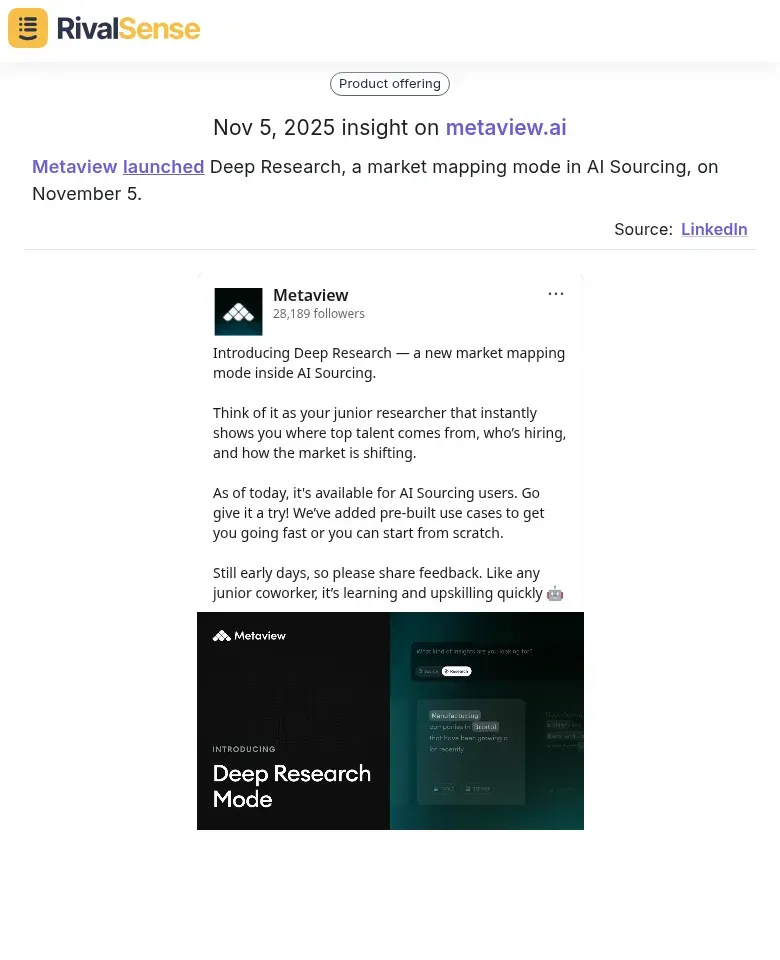Key Account Management Software: The Ultimate Guide for 2026
Sean O'Connor • Nov 5, 2025 • 18 min read
Key Takeaways
- Growth relies on existing customers: Effective key account management software unlocks significant future revenue from existing clients by moving beyond reactive problem-solving to proactive success orchestration and identifying upsell/renewal opportunities.
- Unification is key to momentum: Top platforms break down silos between sales, account management, and support, creating a single, unified view of the customer journey that accelerates team efficiency and ensures seamless customer experiences.
- AI shifts focus to relationships: Modern account management relies on AI as a strategic partner, automating repetitive tasks, identifying at-risk accounts, and predicting expansion opportunities to free managers for high-value human engagement.
- Flexibility outweighs features: The ideal system must be flexible and easy to adopt, integrating seamlessly with existing tools and adapting to your team's unique process rather than forcing cumbersome workflow changes.
- Visibility drives strategy: Essential features include customizable, real-time reporting dashboards that track account health, forecast revenue, and spotlight team performance, turning complex data into clear strategic game plans.
What is Key Account Management Software?
Key account management software serves as the strategic command center for your most valuable client relationships. While traditional sales focuses on acquiring new business, this specialized system is dedicated to transforming your best customers into lifelong strategic partners.
It acts as your team's central digital workspace, tracking every interaction, contract renewal, and growth opportunity so no strategic advantage is ever missed. This system identifies which key accounts are primed for expansion, monitors competitive threats, and keeps everyone aligned on account health, allowing you to make strategic moves with total confidence.
Top-performing teams use unified platforms to connect key account management with their entire business strategy. This holistic approach breaks down organizational silos between finding, winning, and growing strategic accounts, giving your entire team complete visibility into the entire customer lifecycle.
The ROI of Key Account Management Software
Your key accounts represent more than past victories—they are your most significant drivers of future growth and competitive advantage. By transforming satisfied enterprise clients into enduring strategic partners, effective key account management unlocks predictable revenue streams while avoiding the steep acquisition costs associated with new enterprise deals.
With the right platform, your team can shift from reactive firefighting to proactive strategic partnership management. Gaining comprehensive visibility into account health allows for early identification of expansion opportunities and risk mitigation before issues escalate. This strategic clarity empowers your team to confidently focus energy on the relationships that will drive maximum business impact.
An effective platform should enhance existing strategic workflows rather than necessitate massive operational overhauls. Modern platforms automate administrative tasks and conform to your team's unique account management process, delivering a single source of truth for improved strategic alignment and execution speed.
Key Features to Look for in a Key Account Management System
Selecting a key account management system requires strategic focus on capabilities that directly empower your team to manage complex enterprise relationships. The ideal platform integrates seamlessly into your existing strategic account planning process, removing operational friction so account managers can dedicate their time to cultivating strategic partnerships and securing long-term revenue.
Essential Features Checklist:
- Strategic Account Planning: Look for tools that support complex account mapping, stakeholder analysis, and strategic business reviews
- Pipeline and Opportunity Tracking: Requires visual platforms where you can customize stages and track all strategic opportunities in one place
- Collaboration and Communication: Your system must serve as the central hub for cross-functional team communication with shared notes and complete interaction history
- AI and Automation: Provides intelligent assistance to automate repetitive work and surface strategic insights about account health and competitive positioning
- Reporting and Analytics: Customizable dashboards that track strategic account metrics, forecast revenue, and spotlight team performance
- Integrations and Flexibility: Prioritize platforms that connect easily with your existing software stack and allow customization without developer resources
- Competitive Intelligence Integration: Systems that incorporate competitor tracking to help you anticipate market moves and protect key accounts
Top Key Account Management Platforms for 2026
The search for the right key account management platform should prioritize strategic utility over exhaustive feature lists. The most effective tools streamline complex enterprise workflows and empower account teams to succeed by automating administrative burdens, freeing them to concentrate on strategic relationship-building and business development.
Platform Comparison Table
| Platform Name | Best For | Key Strengths | Starting Price |
|---|---|---|---|
| monday CRM | Teams needing adaptability and AI-powered features | No-code customization, AI-driven insights, seamless integration | $10/user/month |
| HubSpot | Companies wanting all-in-one solution | Comprehensive free tier, strong marketing integration | Free (with paid upgrades) |
| Salesforce | Large enterprises with complex needs | Extensive customization, robust reporting | $25/user/month |
| Zoho | Small to medium businesses | Affordable, integrated business applications | $14/user/month |
| Pipedrive | Sales-focused teams seeking simplicity | Easy to use, straightforward deal tracking | $14/user/month |
1. Monday CRM
By transforming key account management into a streamlined, data-driven process, monday CRM keeps your entire team aligned and your strategic customers engaged. The platform combines powerful customization with intuitive design, making it perfect for account teams managing complex enterprise relationships without technical complexity.
Key Features:
- Centralized strategic account profiles consolidating all stakeholder details and relationship history
- Custom workflow automation for strategic business reviews and executive touchpoints
- Real-time dashboards tracking key account metrics and competitive positioning
Why It Stands Out: No-code customization lets you build strategic account management workflows matching your exact enterprise process without technical expertise.
2. HubSpot
HubSpot delivers an all-in-one CRM platform that unifies marketing, sales, and service operations for growing businesses focused on key account development.
3. Salesforce
Salesforce delivers enterprise-grade CRM solutions that centralize customer data and streamline complex key account relationships for large organizations.
4. Zoho
Zoho delivers a comprehensive suite of business applications that work together seamlessly, making it powerful for companies managing key accounts across multiple business functions.
5. Pipedrive
Pipedrive transforms sales pipeline management with its visual, drag-and-drop interface that makes strategic deal tracking effortless for account teams.
How to Choose the Best Key Account Management Software: A Practical 5-Step Guide
Making the right software choice requires a strategic approach that aligns with your team's operational DNA and competitive landscape. Follow this practical checklist to ensure you select a platform that becomes an invisible force multiplier for your key account strategy.
Step 1: Conduct a Strategic Needs Assessment
- Identify key account pain points: Where do strategic deals get stuck? Where does communication break down with enterprise clients?
- Map your current process: Document how you currently manage key accounts from strategic planning to renewal
- Assess competitive intelligence gaps: What competitor information would help you better protect and grow key accounts?
Step 2: Define Your Must-Have Features
- Core functionality: Centralized account data, strategic planning tools, stakeholder mapping
- Collaboration capabilities: Cross-functional team alignment, executive reporting
- Integration requirements: Connection to existing sales, marketing, and support systems
- Competitive monitoring: Ability to track competitor movements that could impact key accounts
Step 3: Evaluate Platform Flexibility and Scalability
- Test customization options: Can the platform adapt to your unique key account management methodology?
- Assess scalability: Will the system grow with your expanding key account portfolio?
- Check integration capabilities: How easily does it connect with your existing technology stack?
Step 4: Consider the Total Cost of Ownership
- Implementation costs: Training, data migration, customization
- Ongoing expenses: Subscription fees, additional user costs, premium features
- Hidden costs: Reduced efficiency during transition, potential revenue disruption
Step 5: Plan Your Implementation Strategy
- Phased rollout: Start with your most critical key accounts
- Team training: Ensure all stakeholders understand the new processes
- Success metrics: Define what success looks like in the first 30, 60, and 90 days
Key Trends Driving Key Account Management in 2026
The evolution of key account management is fundamentally driven by intelligent technology acting as a strategic partner. This shift moves teams away from administrative focus toward high-value, relationship-driven strategic work.
Strategic AI Integration
AI-powered systems proactively identify at-risk strategic accounts and automate routine communications, liberating managers to focus on long-term partnership development and competitive positioning. This strategic automation shifts focus to the critical human element of executive relationship management.
Unified Cross-Functional Collaboration
Breaking down organizational silos is essential for key account success. Connecting sales, marketing, executive leadership, and support on a single platform gives everyone a unified view of the strategic customer journey, ensuring total team alignment and seamless enterprise customer experiences.
Competitive Intelligence Integration
Modern key account management requires understanding not just your customers but also your competitors. Platforms that incorporate competitor tracking help you anticipate market moves, protect key accounts from competitive threats, and identify expansion opportunities based on competitive positioning.
Pro Tip: Consider supplementing your key account management platform with specialized competitive intelligence tools like RivalSense, which tracks competitor product launches, pricing updates, event participations, and management changes across 80+ sources. This intelligence delivered in weekly email reports can provide crucial context for your key account strategy.
Real-World Competitive Insights from RivalSense
Here are examples of insights that RivalSense tracks, showcasing how competitor intelligence can enhance your business strategy:
-
Metaview Launches Deep Research:

Metaview launched Deep Research, a market mapping mode in AI Sourcing, on November 5. Tracking such product launches helps you anticipate competitor innovations that could threaten your key accounts, allowing proactive strategy adjustments to maintain competitive advantage. -
Figma Introduces New AI Features:

Figma introduced new AI features including an AI app builder, AI prototype generator, AI website builder, and AI wireframe generator, and added an 'Investors' section to its company information. Insights like these reveal competitor advancements and strategic shifts, enabling you to align your key account plans with market trends and protect against disruptive technologies. -
Mariah Carey Teams Up with Sephora:

Mariah Carey teams up with Sephora to ignite the festive spirit. While this is a B2C example, it illustrates how tracking partnerships and events can uncover competitor marketing tactics and brand collaborations, providing insights that might influence B2B relationship dynamics and help you anticipate broader industry moves.
Tech Stack Simplification
The ultimate strategic advantage comes from creating a single source of truth from initial enterprise engagement through strategic renewals. Simplifying your technology stack provides incredible visibility and control, eliminating the guesswork that comes from juggling multiple disconnected systems.
Practical Implementation Checklist
Pre-Implementation Preparation
- [ ] Document current key account management processes
- [ ] Identify key stakeholders and decision-makers
- [ ] Set clear implementation timeline and milestones
- [ ] Prepare account data for migration
- [ ] Establish success metrics and KPIs
Platform Selection Criteria
- [ ] Ease of use and team adoption potential
- [ ] Customization flexibility for unique processes
- [ ] Integration capabilities with existing systems
- [ ] Scalability for future account growth
- [ ] Competitive intelligence integration potential
Post-Implementation Optimization
- [ ] Conduct regular team training sessions
- [ ] Gather user feedback for process improvements
- [ ] Monitor key account health metrics
- [ ] Review competitive intelligence insights
- [ ] Adjust strategies based on platform analytics
Take the Next Steps in Strategic Account Management
Selecting the right key account management platform is a strategic business decision that moves beyond simple technology purchasing. The ideal tool unifies your entire organization around shared account strategies and offers the flexibility to evolve with your competitive landscape.
It's time to transform operational challenges—such as scattered account data, manual competitive research, or disjointed team communication—into your organization's strategic advantages. The right platform provides the central system for total clarity and control over every key account relationship.
Remember that effective key account management extends beyond internal processes to include understanding your competitive environment. Tools that provide comprehensive competitor intelligence can complement your account management strategy by helping you anticipate market shifts and protect your most valuable client relationships.
Give your team the confidence that comes from having the right strategic tools for managing enterprise relationships in today's competitive business landscape. To enhance your competitive edge with real-time insights, try RivalSense for free at https://rivalsense.co/ and get your first competitor report today.
Frequently Asked Questions
What's the difference between CRM and key account management software?
Traditional CRM software focuses broadly on customer acquisition and management, while key account management software specializes in nurturing and growing strategic enterprise relationships. Modern platforms integrate both functions to manage the entire customer journey while providing specialized tools for high-value account management.
How can competitive intelligence improve key account management?
Competitive intelligence helps account managers anticipate market moves, identify competitive threats to key accounts, and uncover expansion opportunities. Understanding competitor product launches, pricing changes, and strategic partnerships provides crucial context for protecting and growing strategic client relationships.
What features matter most for enterprise key account management?
The most critical features include strategic account planning tools, stakeholder mapping, executive reporting capabilities, cross-functional collaboration features, and integration with competitive intelligence sources. Focus on capabilities that directly support your team's strategic account management methodology.
How do we ensure team adoption of new key account management software?
Prioritize platforms with intuitive interfaces, provide comprehensive training, involve team members in the selection process, and demonstrate clear benefits for their daily workflow. Consider starting with a pilot program using your most critical accounts to build momentum and demonstrate value.
Can key account management software integrate with competitive monitoring tools?
Yes, modern platforms often integrate with specialized competitive intelligence tools through APIs or data exports. This integration provides crucial market context that helps account teams make more informed strategic decisions and better protect key accounts from competitive threats.
Sean is a vastly experienced content specialist with more than 15 years of expertise in shaping strategies that improve productivity and strategic business alignment. He writes about digital workflows, strategic account management, and the tools that make modern enterprise teams thrive.
📚 Read more
👉 Data-Driven Key Account Tracking for Healthcare IT: A Strategic Guide to Patient Management
👉 How Vanta's NBA Partnership Revealed Key Expansion Strategy
👉 Optimize Competitor Insights from Website Changes for Strategic Advantage
👉 How to Build a Key Account Management Process Flow for Tech
👉 How Real-Time Competitor Alerts Unlock Media and Content Insights
